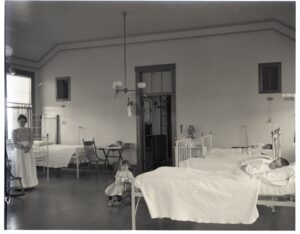William A. Adams Daybook
During the 1870s, William A. Adams maintained a blacksmithing shop close to the intersection of Walnut and Hickory Streets in Springfield, Mass. His trade ran from farriery to repairing iron work, wheels, and wagons, and situated as he was near the southern end of Watershops Pond, one of the industrial centers of the city, his customers ranged from local residents to manufacturing firms, the city, and the Armory.
The Adams account book contains approximately 150 pages containing brief records of blacksmithing work for a range of customers located in the immediate area. Among the more names mentioned are the grocers Perkins and Nye, W. and E.W. Pease Co., J. Kimberley and Co., and Common Councilman William H. Pinney and J. W. Lull, all of whom can be located within a few blocks of Adams’ shop.


